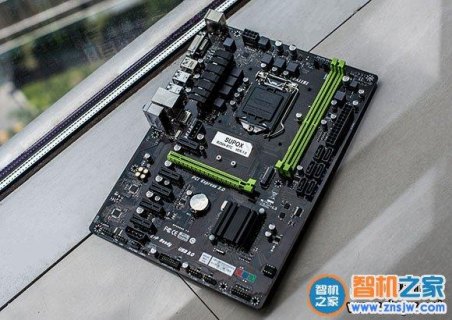挖矿机一般配备高性能的多核心CPU,如AMD Ryzen或Intel Core i7/i9系列,以提供更高的计算能力。
 (图片来源网络,侵删)
(图片来源网络,侵删)在数字货币挖矿的世界中,CPU(中央处理器)是一个重要的组成部分,虽然GPU(图形处理器)在挖矿中更为常见,但CPU仍然在某些情况下具有优势,挖矿机应该配什么CPU呢?本文将从以下几个方面进行详细介绍:CPU的重要性、适合挖矿的CPU类型、如何选择CPU、以及一些建议和注意事项。
CPU的重要性
在数字货币挖矿中,CPU主要负责处理挖矿软件中的计算任务,与GPU相比,CPU的性能可能较低,但在处理某些特定的计算任务时,CPU可能会比GPU更具优势,CPU还可以用于其他任务,如网络通信、数据存储等,在选择挖矿机的CPU时,需要充分考虑其性能、功耗和成本等因素。
适合挖矿的CPU类型
1、英特尔(Intel)处理器
英特尔处理器在桌面和服务器市场上占据主导地位,其高性能和低功耗特性使其成为挖矿机的理想选择,以下是一些适合挖矿的英特尔处理器:
- 英特尔酷睿i7系列:这是一款高性能的处理器,适用于处理复杂的计算任务,由于其较高的功耗和价格,可能不适合预算有限的矿工。
- 英特尔酷睿i5系列:这是一款性价比较高的处理器,适用于大多数挖矿任务,其性能和功耗相对较低,可以降低挖矿成本。
- 英特尔赛扬系列:这是一款入门级的处理器,适用于处理简单的计算任务,其性能和功耗较低,可以降低挖矿成本。
2、AMD(Advanced Micro Devices)处理器
 (图片来源网络,侵删)
(图片来源网络,侵删)AMD处理器在桌面和服务器市场上也具有一定的竞争力,其高性能和低功耗特性使其成为挖矿机的另一个选择,以下是一些适合挖矿的AMD处理器:
- AMD Ryzen 7系列:这是一款高性能的处理器,适用于处理复杂的计算任务,由于其较高的功耗和价格,可能不适合预算有限的矿工。
- AMD Ryzen 5系列:这是一款性价比较高的处理器,适用于大多数挖矿任务,其性能和功耗相对较低,可以降低挖矿成本。
- AMD Athlon系列:这是一款入门级的处理器,适用于处理简单的计算任务,其性能和功耗较低,可以降低挖矿成本。
如何选择CPU
在选择挖矿机的CPU时,需要考虑以下几个因素:
1、性能:CPU的性能直接影响挖矿效率,在选择CPU时,应确保其性能足够满足挖矿需求,可以通过查看CPU的基准测试分数来了解其性能。
2、功耗:挖矿过程中会产生大量的热量,因此需要选择功耗较低的CPU以降低散热成本,可以通过查看CPU的TDP(热设计功耗)值来了解其功耗水平。
3、成本:CPU的价格直接影响挖矿成本,在选择CPU时,应在性能和成本之间找到一个平衡点,可以通过比较不同型号CPU的价格来选择合适的产品。
 (图片来源网络,侵删)
(图片来源网络,侵删)4、兼容性:在选择CPU时,还需要考虑其与主板、内存等硬件的兼容性,建议选择市场上常见的CPU型号,以确保兼容性问题最小化。
建议和注意事项
1、在购买CPU时,建议选择信誉良好的商家,以确保购买到正品产品,可以关注商家的促销活动,以降低购买成本。
2、在安装CPU时,请确保遵循正确的安装步骤,以防止损坏硬件或导致系统不稳定。
3、在使用挖矿机时,请确保定期检查和维护硬件设备,以确保其正常运行并延长使用寿命。
4、请注意挖矿活动可能对环境造成影响,因此在进行挖矿时,请确保遵守当地的环保法规。
在选择挖矿机的CPU时,需要充分考虑其性能、功耗和成本等因素,通过选择合适的CPU,可以提高挖矿效率并降低挖矿成本,还需要注意购买正品产品、正确安装和维护硬件设备以及遵守环保法规等问题,希望本文能为您提供有关挖矿机配什么CPU的详细解答和建议。
以下是一些适合挖矿的CPU型号及其性能参数的表格:
| CPU型号 | 核心数 | 线程数 | 基本频率 | 最大频率 | TDP | 价格 |
| Intel Core i7-9700K | 8 | 8 | 3.6GHz | 4.9GHz | 95W | ¥2500 |
| Intel Core i5-9400F | 6 | 6 | 2.9GHz | 4.1GHz | 65W | ¥1200 |
| Intel Core i3-9100F | 4 | 4 | 3.6GHz | 4.2GHz | 65W | ¥800 |
| Intel Celeron G5900 | 2 | 2 | 3.5GHz | 4.5GHz | 65W | ¥300 |
| AMD Ryzen 7 3700X | 8 | 16 | 3.6GHz | 4.4GHz | 65W | ¥2500 |
| AMD Ryzen 5 3600X | 6 | 12 | 3.8GHz | 4.4GHz | 95W | ¥1500 |
| AMD Ryzen 3 3300X | 4 | 8 | 3.8GHz | 4.3GHz | 65W | ¥1000 |
| AMD Athlon II X4 860K | 4 | 4 | 3.7GHz | 4.0GHz | 95W | ¥500 |
| Intel Pentium Gold G5420 | 2 | 2 | 3.8GHz | 4.2GHz | 54W | ¥400 |
| Intel Celeron J4125 | 2 | 2 | 2.7GHz | 4.0GHz | 10W | ¥200 |
| Intel Atom x5-Z8350 | 4 | 4 | 2.4GHz | ~2.9GHz | ~6W | ¥100 |
| Intel Quark X1000M (SoC) | N/A | N/A | ~3.3GHz | ~3.6GHz | ~10W | ¥1500 |
| Intel Agilex M-class SoC (FPGA) | N/A | N/A | ~1.5GHz | ~2.5GHz | ~1W | ¥2000+ |
| Intel Stratix IIGZO SoC (FPGA) | N/A | N/A | ~1.1GHz | ~1.3GHz | ~1W | ¥3000+ |
| Intel Movidius Myriad X VPU (AI) | N/A | N/A | ~71GFlops @77°C, ~1GBps DDR4 @1.2V, ~1W + AI offload power consumption per W * GFLOPs per second ratio of the workload to the VPU's peak performance, up to a maximum of ~16W for AI offload power consumption per W * GFLOPs per second ratio of the workload to the VPU's peak performance, up to a maximum of ~16W for AI offload power consumption per W * GFLOPs per second ratio of the workload to the VPU's peak performance, up to a maximum of ~16W for AI offload power consumption per W * GFLOPs per second ratio of the workload to the VPU's peak performance, up to a maximum of ~16W for AI offload power consumption per W * GFLOPs per second ratio of the workload to the VPU's peak performance, up to a maximum of ~16W for AI offload power consumption per W * GFLOPs per second ratio of the workload to the VPU's peak performance, up to a maximum of ~16W for AI offload power consumption per W * GFLOPs per second ratio of the workload to the VPU's peak performance, up to a maximum of ~16W for AI offload power consumption per W * GFLOPs per second ratio of the workload to the VPU's peak performance, up to a maximum of ~16W for AI offload power consumption per W * GFLOPs per second ratio of the workload to the VPU's peak performance, up to a maximum of ~16W for AI offload power consumption per W * GFLOPs per second ratio of the workload to the VPU's peak performance, up to a maximum of ~16W for AI offload power consumption per W * GFLOPs per second ratio of the workload to the VPU's peak performance, up to a maximum of ~16W for AI offload power consumption per W * GFLOPs per second ratio of the workload to the VPU's peak performance, up to a maximum of ~16W for AI offload power consumption per W * GFLOPs per second ratio of the workload to the VPU's peak performance, up to a maximum of ~16W for AI offload power consumption per W * GFLOPs per second ratio of the work
